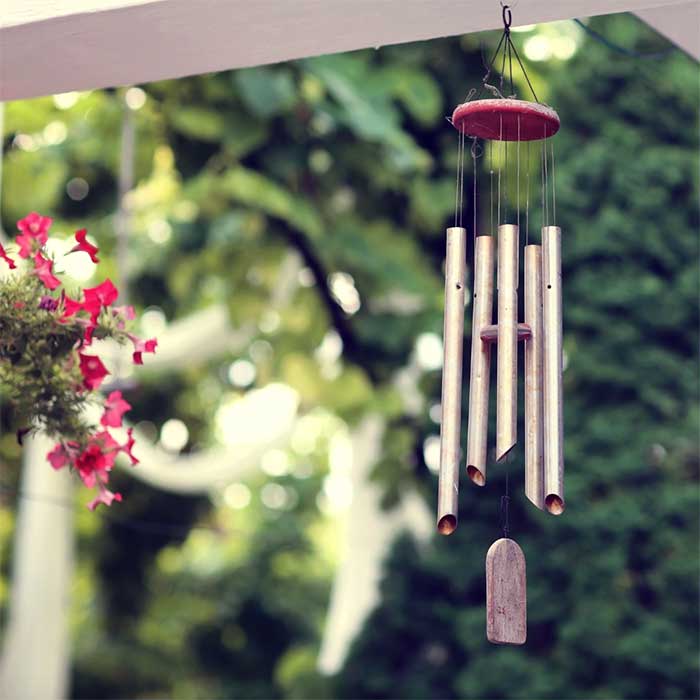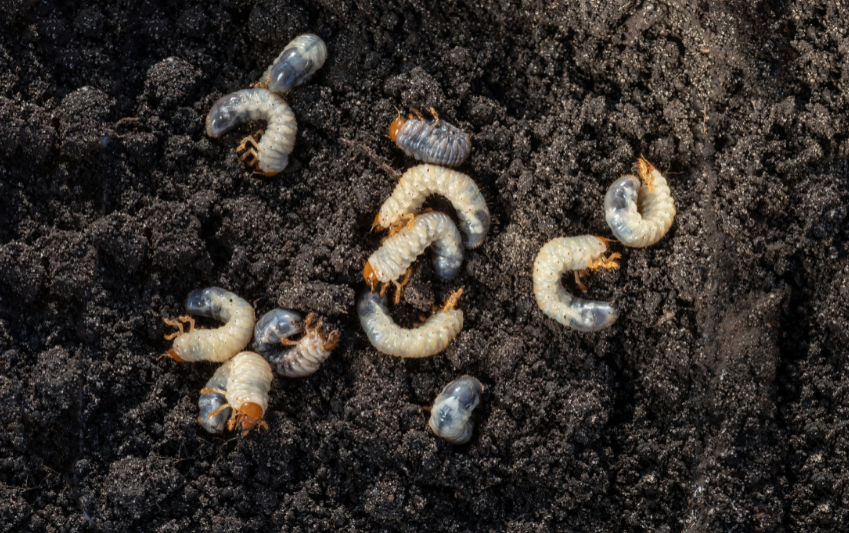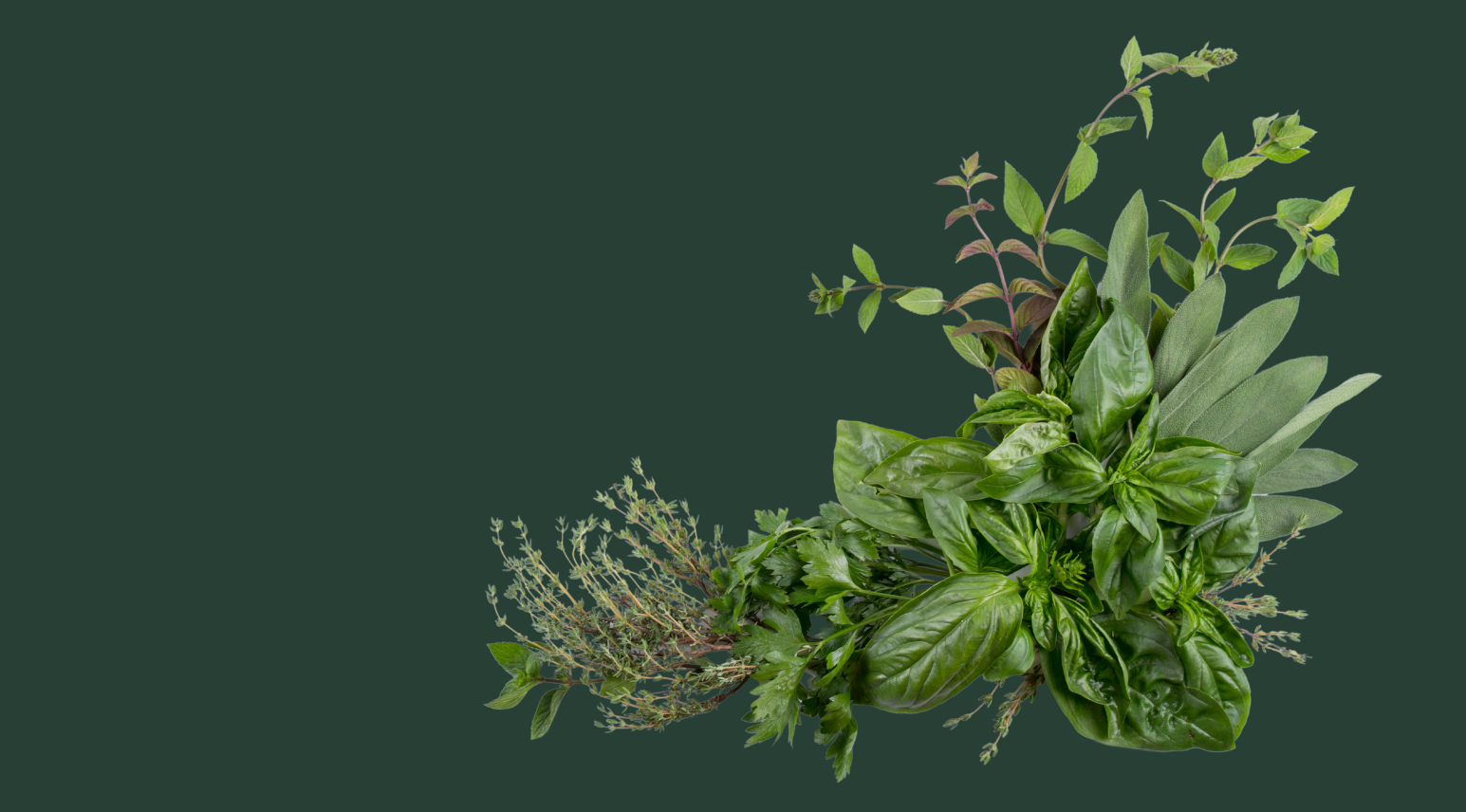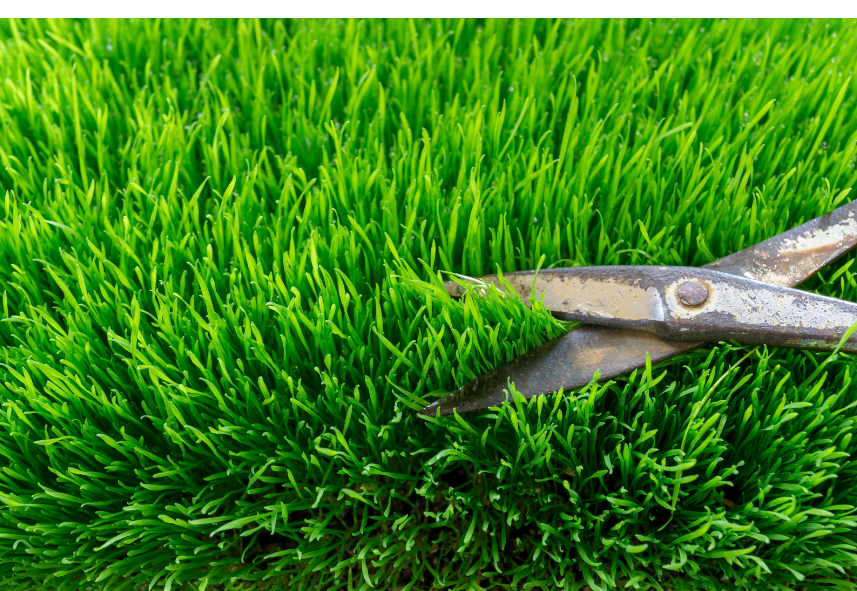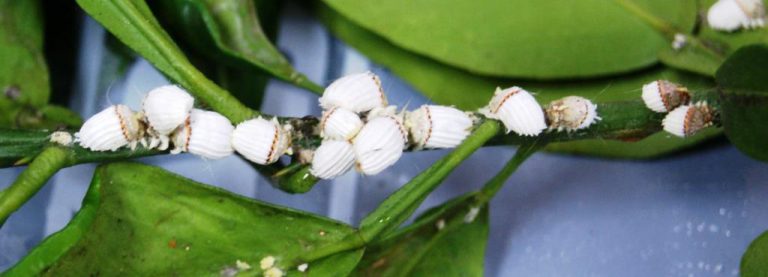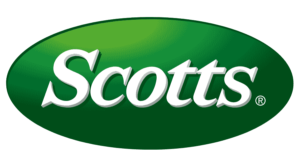
What are Grubs and How Does Scotts® Grub B Gon Max® Grub Killer Work?
What is a grub?
A grub is the larvae of a beetle species, such as the masked chafer, European chafer, or Japanese beetle.
 Typical lawn grubs are white, C-shaped with soft bodies, legs near the head and are about 1.27 cm long.
Typical lawn grubs are white, C-shaped with soft bodies, legs near the head and are about 1.27 cm long.
Grubs feed on grass roots and organic matter in the soil while they grow, resulting in turf damage or demise.
The grub lifecycle consists of 4 stages: Egg, Larva, Pupa, and Adult.
The grub lifecycle is completed once the pupa emerges as an adult beetle laying eggs in the soil and starting the process over again
Why are grubs a problem for lawns?
Grubs feed on the roots of turf and landscape plants.
- Turf becomes thin and patchy, as roots become weak and are consumed by the grubs.
- Scavenger animals (such as raccoons and skunks) dig up turf to feed on the grub larvae — leaving the lawn in dismal shape with holes or patches torn out.
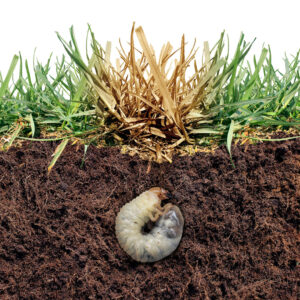
Lawn grub damage as chinch larva damaging grass roots causing a brown patch disease in the turf as a composite image isolated on a white background.
What is BT, how does it work and when to apply?
Bacillus thuringiensis subsp. galleriae strain SDS-502 (Bt) is the active ingredient in Scotts® Grub B Gon Max® Grub Killer – it is a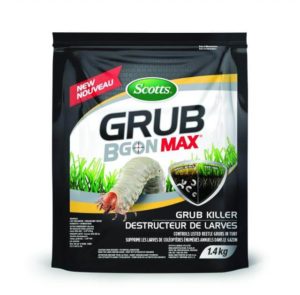 microbe that is naturally found in soil-borne bacteria. It consists of a spore and a protein crystal within the spore, which is toxic to immature insects (i.e. larvae).
microbe that is naturally found in soil-borne bacteria. It consists of a spore and a protein crystal within the spore, which is toxic to immature insects (i.e. larvae).
- The protein crystal secreted by bacterial spores is the “active”.
- The active is released into moist soil (after water or rainfall).
- Effectively controls white grubs (beetle larvae) upon ingestion of the Bt toxin.
- Grubs consume the Bt toxin, stop feeding and die from blood poisoning/ internal infection.
- Works against all 3 growing stages (instars) of grubs (best results with 1st and 2nd instars).
- Provides preventative or curative control of white grubs during the season of application.
Spring (April to late May): Apply after ground has thawed to control overwintering grubs that are now migrating to the surface to feed on the roots.
Summer★ (late June to early August): Apply to control newly hatched grub larvae. Should be applied within 2–3 weeks of peak timing for egg-laying adult beetles.
Fall★ (late August to September): Apply to help control new grubs that have hatched from new beetle eggs throughout the summer. This will help to protect the turf from over-wintering grubs and lessen the impact and number of grubs the following spring.
Scotts


